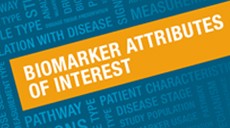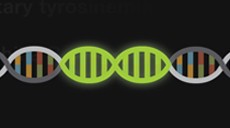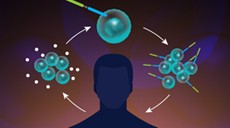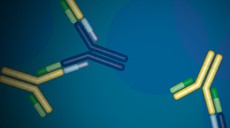Science in 2017 saw incredible advances in research and clinical technologies, the rapid evolution of gene editing, and the promise of novel therapies and potential cures thanks to precision medicine. Along with achieving a deeper understanding of biological systems comes the desire to learn more. Scientists are constantly testing the limits on what can be accomplished and pushing technology to keep up with compelling ideas that help turn concepts into reality.
Bioradiations has had the opportunity to follow these improvements in technologies and successes in therapies and treatment options throughout 2017, contributing to the academic growth of eager readers in the science community. Here are highlights from what we’ve learned this year and the promise of more to come in 2018.
Technological Advancements Pave the Way for Better Science
Over the past year, advances in technologies stand out as one of the most tangible and applicable achievements. A focus on making processes faster and easier while maintaining and possibly increasing sensitivity and accuracy has provided a platform for researchers to learn more in less time.
New technologies assisted in enhancing our understanding of and applications for gene expression, gene manipulation, and protein characterization. From cell sorting to enrich for successful gene edits and isolate targeted stem cells to method improvements in quantitative PCR and chromatography, research has shown that integration of techniques can improve outcomes.
Bioradiations informed readers about the integration of flow cytometry into gene editing and cell sorting for in vitro and in vivo characterization of cells. Applying flow cytometry to CRISPR workflows can speed time to reliable results and allows more precise edit detection. As CRISPR-Cas9 becomes more of a fixture in genomics and medicine, new techniques that can accelerate the process provide opportunities for these approaches to move toward mainstream use. When performing gene editing using CRISPR-Cas9, enriching for GFP-positive cells before antibiotic selection can shorten the protocol by 30 days, saving time, reducing cell passaging, and increasing targeted selection of edited colonies.
Technological advances in cell sorting, as applied to stem cells in particular, is significant to cell regeneration research and the application of certain stem cells for treatment of disease. Isolating pure stem cell populations from a heterogeneous cell suspension by fluorescence-activated cell sorting can separate even different types of stem cells from each other based on proteins expressed on the cell surface or within the cell. Though cell sorting is generally regarded as complex and costly, the advent of user-friendly benchtop cell sorters has opened the technique up to any lab interested in cell type separation.
As researchers, we are always looking to optimize current techniques to increase usability of methods and sensitivity of results. Bioradiations highlighted best practices for optimal qPCR procedures and for fluorescent western blotting detection. As qPCR is a common method to quantify gene expression, improving protocols by optimizing primer design and reaction conditions and by testing reaction efficiency before runs generates higher quality results and reproducible data. And while the fundamental principle of western blotting has remained intact, improvements in how proteins are detected using fluorescence to enhance sensitivity with brighter fluorophores, minimize nonspecific binding, avoid crosstalk, and decrease background can offer more distinct protein separation and multi-protein analysis.
Additional progress in protein isolation and characterization methods bridge technologies together to create more robust protocols. A new approach to speeding up protein research has been through method improvements in electrophoresis and chromatography. Using chromatography to separate complex biological mixtures and isolate proteins of interest prior to characterization, complimented by stain-free electrophoresis to further separate those proteins that are too similar in size to elute effectively, can decrease time to results and allow more complex protocols with minimal hands-on involvement.
Growing from Technology to Clinical Application
Bioradiations in 2017 showcased how clinical trials and biomarker screening procedures are making their mark on precision medicine. The implementation of biomarkers, a measurable biological indicator, is providing more efficient drug discovery and development processes. In particular, biomarkers are having an impact on immunotherapy through disease diagnosis, as indicators of disease progression, and as a measure of therapeutic response. This last application has influenced clinical trial success by way of biomarker screening and data analysis using artificial intelligence in programs such as BiomarkerBase from Amplion.
Gene-based therapies and biosimilars have also received increased attention this year, from personalized treatment to prospective cures. First and foremost, gene editing is changing current approaches to genetic therapies and even how we think about healthcare. By offering the potential for a cure instead of ongoing treatment of disease, gene editing, including ZFNs, TALENs, and especially CRISPR, can rapidly expand the number of treatable diseases to include single and multi-gene disorders as well as those diseases that result from mutations in regulatory elements and noncoding regions such as Alzheimer’s and hearing loss.
In conjunction with gene editing, immunotherapy is getting ever closer to realizing its potential as a non-invasive and non-toxic treatment for diseases such as cancer. Since immunotherapy harnesses the body’s own immune system to eradicate disease, personalized therapies can either stimulate the immune system to attack targeted cells or augment immune system components ex vivo to assist the immune system upon reintroduction.
As all of these potential treatments come to life, the regulatory landscape is working to adapt. Biosimilar development is on the rise, but what does this mean for the pharmaceutical pipeline? Biosimilars, effective alternative treatments to an original brand product, offer valuable treatments at lower cost. However, biosimilars are slow to be accepted due to concerns around safety and efficacy of a less time-tested drug that is similar to but not an exact replica of a reference product. The challenge for the biosimilars market in upcoming years is to increase consumer confidence and prove its place in the already established biotherapeutic market by consistently meeting, or exceeding, set standards.
Looking Forward
With so much forward movement across technology and therapy development in 2017, we eagerly await what 2018 will bring. Further progress in targeted therapies and personalized medicine using gene editing and immunotherapy is on the horizon, undoubtedly along with enhanced cell and protein biology techniques to expand a growing foundation of information from which we can continue to build.
BiomarkerBase is a trademark of Amplion Inc.















